
Welcome to Revisiting Disney! Today, we’re looking at a film that is very near and dear to my heart, Cinderella! I’ve labeled each category, so if you want to skip to the parts that interest you most, feel free. And, of course, if you have any thoughts, burning or otherwise, please share in the comments!
In a lot of ways, Cinderella was the inspiration for this entire project. I grew up loving Cinderella, the songs, the colors, the adorable talking mice, the artistry. I also have a lot of good memories associated with it; it was the movie I watched when my parents went to the hospital the evening my sister was born (why do I remember this from when I was five? I have no idea, but there you have it).
Then, one day, I watched it as a nostalgic yet jaded college student (at the prompting of my sister, who had become horrified by Cinderella before me). I was horrified. To me, Cinderella was so passive, so problematic, that even the strongest of nostalgic goggles couldn’t save this childhood classic. Not a super big deal, but sad.
Of course, on subsequent viewings, I realized that college Bailey was unfair. Cinderella is not a passive character, by any means. I’ll talk more about this later, but she fights in her own way and within the system.
Looking at the film through the lens of the time it was made helped me to see the ways Cinderella does this and better understand the choices the studio made in creating her character. Then I thought to myself, what if I did that for every Disney film, not just this one? Would that change how I see them? And this series was born.
Watching Cinderella as an adult, I can see the humor and appreciate the film for the work of art that it is. Now, we shall look at the film that, in my opinion, kickstarted the original Disney Renaissance, Cinderella. Thank you for indulging me in this trip down memory lane.
BACKGROUND
Released on March 4th, 1950, Cinderella was the first full-length animated feature that the Disney Studio had produced since Bambi. One of my animation history texts calls the chapter dealing with the 1950s “Cinderella Restores the Glory,” and that is really the best way to put it (Thomas 1992: 100).
According to the Internet Movie Database, the studio was struggling. We have talked about the anthology films for the past few weeks, and how they helped Disney save up the money to make full-length films again. Walt wasn’t sure if he should release this or Alice in Wonderland first (luckily, they went with Cinderella; as we’ll talk about next week, Alice was less successful).
Cinderella cost almost $3,000,000 to make, and it was seen as a major gamble; if it had failed then that may have been the end of the Studio. Luckily, it was a major success, passing even Snow White in terms of money made (at least initially). It remains one of the most beloved of Disney’s films (or hated. It seems to be polarizing that way).
MUSIC
The music in Cinderella was composed by Paul J. Smith, who had worked on Snow White and Pinocchio, and Oliver Wallace, who had worked on Dumbo and would work on both Peter Pan and Alice in Wonderland. The team would be nominated for an Academy Award in 1951 in the Best Music, Scoring of a Musical Picture category for Cinderella.
The film was also nominated for Best Sound, Recording and Best Music, Original Song, for “Bibbidi-Bobbidi-Boo.”According to Adrian Bailey, the added bonus of a song that became a hit was an essential part of Cinderella’s success. Both “Bibbidi-Bobbidi-Boo” and “So This is Love” became very popular after the film’s release.
Ilene Woods, the voice of Cinderella, had not known that she was auditioning for the part. She was friends with Mack David and Jerry Livingston, who had written some songs for the film and they had asked her to record some of their new work. She did, and they sent the tapes to Walt, who loved her voice and called her up. Woods had become a radio star at 14, hosting “The Ilene Woods Show.”
It is interesting to note that the song “Sing, Sweet Nightingale” had layered harmonies, similar to the work done in “The Whale Who Wanted to Sing at the Met.” The result is a lovely sequence with animation that is truly fabulous.
Cinderella was the first of Disney’s films to have its music become part of the Walt Disney Music Company, which had only recently been formed. This kept the music in the Studio.
ANIMATION
Cinderella is unique in that it is the first of the Disney films in which all of the Nine Old Men work together. Ollie Johnston, Milt Kahl, Ward Kimball, Frank Thomas, Marc Davis, Eric Larson, Les Clark, John Lounsbery and Wolfgang Reitherman serve as the Directing Animators, along with Norm Ferguson.
The film used live-action models for the human participants before animating the film, as a way to save money, and the scene where Cinderella’s dress is transformed from the one destroyed by her stepsisters to her white ball gown is considered by many to be Walt Disney’s personal favorite piece of animation. I can see that because it really is a gorgeous sequence.
Cinderella is number 9 on the American Film Institute’s Top Ten Animated Film List, probably because it was a brilliant film (looking back, I should have put it on my list. It might be #22, I suppose. There are so many great animated films, I keep thinking of more).
RELATED: 20 Most Groundbreaking Animated Films
Finch says that although Cinderella has a lot in common with Snow White, it has more glamour and added gags, mostly using the mice Jaq and Gus. The backgrounds are also softer and stylized, less detailed than others but still gorgeous. They remind me of watercolor paintings, and you can see the influence of Mary Blair, who worked on color and design when you look at them.
Bailey agrees with Finch that the movie was a success partially because it had an amazing balance of humor and romance. The mice and birds are drawn in such a way as to feel real without detracting from Cinderella and her story; rather, they enhance it (like any good sidekick would).
Bailey also says that when comparing Cinderella and Snow White, Cinderella showcases “the advances in animation technique” and looks “crisper” (Bailey 1982: 180). Since the two films were made 13 years apart, this makes sense, animation had grown in that time.
RELATED: Revisiting Disney: Snow White and the Seven Dwarfs
THE PLOT
Thomas describes Cinderella as the ending of the “long dry season” at the Disney Studio (Thomas 1992: 100). The studio had been working on several projects before the War, including Cinderella, Peter Pan, and Alice, but these had all been shelved. The studio, he says, had had trouble with the characters in Peter and Alice, but Cinderella had more potential.
There was “an engaging heroine in Cinderella, valid villainesses in the guise of the stepmother and the ugly sisters, comic relief with a set of house mice, a well-rounded story with a happy ending,” (Thomas 1992:100). Basically, the story was ideal and drew a crowd of adults who, remembering Snow White from their childhood, were excited to share Cinderella with their children.
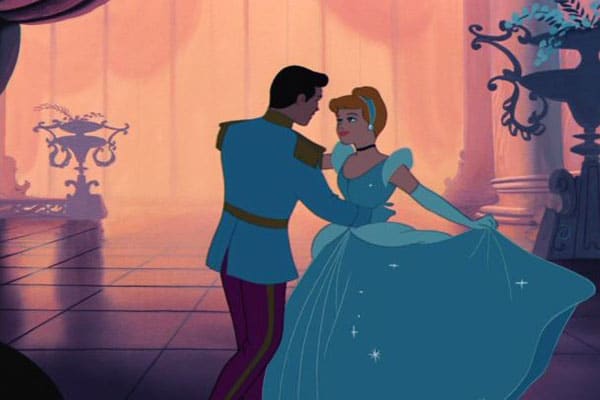
On the off-chance you don’t know this story, here’s a brief summary: The story follows Cinderella, who volunteers (basically) as a maid for her stepmother and stepsisters. Cinderella is a kind and compassionate soul, who champions the house mice and birds, and protects them from the cat. As a result, the animals are all fiercely loyal to her. One day, the day of the film, there is a royal ball.
The ball is being given by the king to help the prince find a bride, and Cinderella dearly wants to attend. Her stepmother says that she may, if all her chores are completed and she has an appropriate dress. The woman, who is really one of Disney’s most terrifying villains, loads Cinderella down with chores so she can’t complete her ball dress. Luckily, her animal friends complete it for her; unluckily, her stepsisters tear it to shreds.
Again luckily, Cinderella’s fairy godmother appears and sends her off to the ball in magically-created finery, with the rule that she must be home by midnight. Unknowingly catching the eye of the Prince, Cinderella falls in love and the feeling is mutual. At midnight, however, she runs away, leaving behind a glass slipper. The prince declares he’ll marry the girl the shoe fits, and his father, ecstatic, sends out the Grand Duke to find the mysterious maiden.

The evil stepmother, figuring out that Cinderella is said maiden, locks Cinderella in her room while the Grand Duke is present, proving that sometimes the most terrifying of the villains are the truest to reality. The stepmother has no powers, except her power to make Cinderella’s life a nightmare, and boy does she use it!
Cinderella’s kindness to others pays off again, however, as her mice friends steal the key and, with the help of the other animals, let her out in time to prove that she is the girl who lost the glass slipper. Cinderella and the prince are married and live happily ever after. It’s a really sweet story, and the ending is wonderful because good triumphs over evil and kindness wins over meanness.
SOURCE MATERIAL
Cinderella was based on the Charles Perrault fairy tale of the same name though almost every different culture in the world has a version of this story. For that reason, all of my animation histories seem to think that the success of Disney’s Cinderella was automatic.
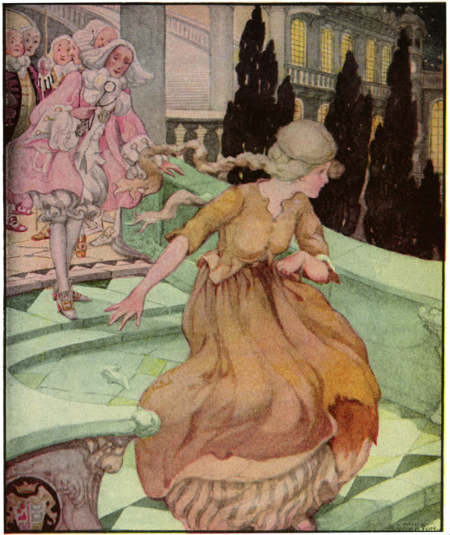
Finch gives the credit for Cinderella’s success to the fact that Disney was able to take the source material and make it their own, to add that touch of Disney magic to a story that was already pretty universally beloved.
The first “Cinderella” story, according to Maria Tater, is from China and her name is Yeh-hsien. Written by Tuan Ch’eng-shih around 850 AD, this Cinderella is also basically a slave for her stepmother and stepsisters, though instead of a fairy godmother, she has a magic fish.
The Grimm brothers’ version of the story, collected in 1812 and titled “Aschenputtel,” is just as violent as we have all come to expect from the Brothers Grimm. While a tree planted on her mother’s grave gives Cinderella her finery, the story ends with the stepsisters’ having their eyes pecked out, after cutting off parts of their feet in an attempt to fit in the slipper.
RELATED: Behind the Fairy Tale: Cinderella Versus Ella Enchanted
Disney based their film on Perrault’s 1697 fairy tale, “Cinderella, or The Little Glass Slipper.” This particular version is interesting because the French word that means glass is close to the word for fur, so scholars have debated that for years. Though nowadays they are fairly certain that the slipper was glass, people used to think it was made of fur (and in some versions, it is. Just not the French one).
For the most part, the Disney crew followed along fairly closely to the source material, though the talking animals were removed, the queen was not dead (the royal family really had much less to do), the prince met Cinderella at the carriage, the carriage and crew were pumpkin, mice, a rat and lizards, and there were multiple balls. Otherwise, the story follows the same path and, to be honest, the spirit of the story remains intact.
A major difference from the source material, however, is that Cinderella’s father is alive in Perrault’s version of the story, something that I think Disney left out because, honestly, no one wants to hear about blood relations doing horrible things to each other. The stepfamily is not related by blood, so I think the idea is that it’s less horrible to imagine that way.
Perrault’s story is clearly a morality tale, and Cinderella is described as good-natured and kind many times, so kind that she even gives her stepsisters’ beauty tips that are actually good. In this version, Cinderella is nicer than in the Grimms’, because she brings her stepsisters to the palace and helps them find husbands, while in the Grimm version, she does nothing to help them in their newfound blindness.
Perrault’s tale ends with a moral, which I have included:
-“The beauty of a woman is a rare treasure.
To admire it is always a pleasure.
But what they call real grace
Is priceless and wins any race.
-That’s what the fairy in this tale
Taught Cinderella without fail,
Here’s how she could become a queen
Teaching lessons, yet staying serene.
-Beauties: that gift is worth more than a dress.
It’ll win a man’s heart; it will truly impress.
Grace is a gift that the fairies confer;
Ask anyone at all; it’s what we prefer.
-Surely it’s a benefit
To show real courage and have some wit,
To have good sense and breeding too
And whatever else comes out of the blue.
But none of this will help you out,
If you wish to shine and gad about.
Without the help of godparents
Your life will never have great events” (Tater 2002: 43).
I think that this is saying, basically, that kindness and remaining calm and kind in the face of conflict and trial is more precious than beauty; in fact, it makes a person more beautiful (and, of course, a fairy godmother never hurts).

This idea and the girl who inspired it are consistently being rebooted for new generations, each with the same rags-to-riches story, rewarding the beautiful young woman for her innate goodness, kindness, and patience.
RELATED: Ten Awesome Cinderella Films
The 1950’s
Cinderella was made in the late ’40s and released in 1950. As a result, there are some things that seem out of place and in some ways contrary to the way we operate as a society today. I address most of these in the Bonus Section.
This film was started when the country was still reeling from being at War, a time when women were taking more active roles outside the home. In the ’40s, the ideal woman was working outside the home, keeping the economy going and providing for their families while the men were off at War.
After the War, this shifted to women staying at home and not taking paid jobs, often leaving the jobs they had held during the War. Carolyn Kitch calls this the changing ideal of the “new woman” (Kitch 2001: 184). Kitch also points out that the ideal standard of womanhood changes over time to match what society needs, and this was visible in the ’40s and ’50s.
Cinderella fits into the idea of the “new woman” of the Post-War era. She is at home, maintaining the house cheerfully and with grace and poise. She also fits into the more conservative ’50s, when kind and sweet (at least in film) Doris Day types were an ideal.
The ’50s are the era that people most think of when discussing “the good old days,” and it’s not hard to see why. At a glance, things were going well. Unemployment and inflation were both down, industry was booming and new technologies were being developed. Suburbs were developing, the population was booming, and the cars were awesome too.
However, there was a dark side to this prosperity. Yes, the 1950s was a time of prosperity and economic booming, a time of relative peace and prosperity. But the 1950s were also the era of the Cold War and the rumblings of the Civil Rights Movement and the Feminist Movement, both of which started in the ’50s and gathered speed in the ’60s.
BONUS SECTION! The Sequel and Common Concerns
For this film, I did something a little strange. I also watched one of the sequels, Cinderella III: A Twist in Time. This film is one that my sister and I rented, prepared to make fun of it (because it sounded dumb and like a truly terrible film).
Here’s the plot: the evil stepmother steals the magic wand, turns back time and undoes the happy ending from Cinderella, putting Anastasia, one of the stepsisters, in Cinderella’s place. The film is about Cinderella, the Prince, and Anastasia all struggling and fighting to find their happy endings. Weirdly enough, it was a really cleverly done story and we ended up kind of liking it.
The prince is given a personality and he and the king have several amazing conversations. My favorite one goes something like this, in regard to the prince’s decision to marry whoever the slipper fit:
King: “Do you really think that there’s only one woman in the whole kingdom who wears a size four and a half?”
Prince: “It’s all I have to go on, here.”
Not only is the prince more present in the story, but Cinderella is a much more obviously active participant. She goes to the palace to find the prince and actively tries to break the spells that her stepmother has cast. While the animation could be better, it still remains true to the spirit of the original.
The movie is very aware of all the things that might make it problematic to modern audiences and proceeds to retell the story in that vein. And, to be honest, any sequel that can make fun of its predecessor in a loving kind of way is a winner, in my book.
There are some issues that are present in Cinderella, most noticed by modern audiences, including cynical college-Bailey. Here are some of them, and my responses to them.
First, why did Cinderella stay in a terrible and abusive place? My answer to that is this, where was she supposed to go? In the source material, her father is there, and in most versions of the story, she really doesn’t have anywhere to go. At least here she has a roof over her head and isn’t starving in the streets. She may be overworked and tired, but she has a home (such as it is).
RELATED: Cinderella Film Review
Second, she and the prince only knew each other for those few hours at the ball. How is that love? Did they even talk? Okay, this is fair, but it’s a film with talking mice. I can justify there also being love-at-first-sight. Stranger things have happened in real life, anyway.
Thirdly, Cinderella is a pretty passive player in this story. What’s up with that? I would have to disagree with that one. I noticed when rewatching the film that not only does she display a high level of sass regarding her stepfamily while interacting with the mice, she does take initiative and asks to go to the ball. Not only that, she is fighting an unfair system that she is trapped in from within the system. It’s less obvious, but still present.
She is doing her best to make a terrible situation better. She keeps and feeds mice, sabotages the cat and, although she is respectful in their presence, the very presence of her sassy responses tells me that she is just waiting for the right moment to get out. She’s aware that it’s bad, and she’s aware that she’s stuck, so why make it worse?
Finally, and this is more of a comment. I have heard it said that Cinderella didn’t actually ask to meet and marry the prince. All she wanted was a night off to go to a party, a new dress and some fantastic shoes. The falling in love thing was just a bonus. This saying started popping up places when the new movie was coming out, and I loved it.
LESSONS LEARNED
From Cinderella, I learned that it’s important to always be kind. Cinderella was kind to the animals, and in the end, they saved her because of that kindness. Her kindness and sweetness were also, I like to think, something that the prince noticed and loved about her during “So This is Love.” They were walking and talking, right?
With that, however, Cinderella also teaches that kindness is its own reward. Cinderella’s kindness is probably what kept her sane during her time as a servant for her stepfamily. By choosing to believe that there was some good in them (however deep down it was buried), her situation was more bearable.
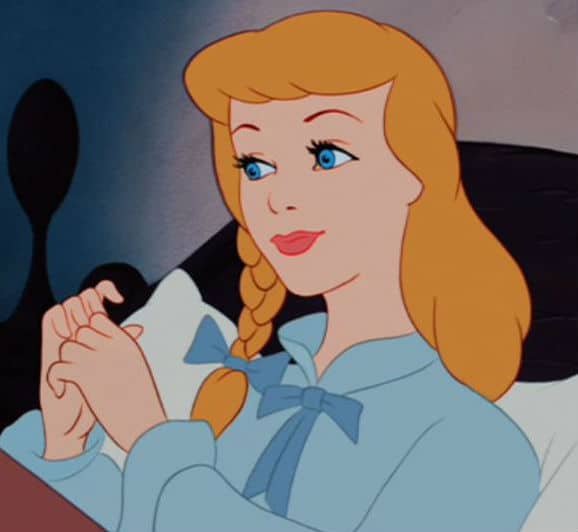
Another lesson is that pretty is as pretty does. Cinderella’s outward appearance is only made more beautiful by the grace and kindness she shows to others.
Finally, the last lesson is to keep dreaming and have faith, but know when that faith requires you to take action to get where you want to be. And yes, goodness will triumph over evil.
DOES IT HOLD UP?
Cinderella is one of those films that can seem to be a bit problematic at times, but really is a beautiful piece of animation. The overall lessons, the importance of kindness and the reminder that, yes, good will always win out over evil, are things that stay with you. The fact that the studio created a sequel that was willing to laugh at the original doesn’t hurt either. This is one of my favorite Disney films; I laugh, I cry, and I wish that I had talking and sewing mice for friends. And, of course, it is a tale as old as time.
For next week: Alice in Wonderland
If you enjoyed this post and the others in the Revisiting Disney series, and have found yourself wishing that you could find them all in one convenient and bound book with eight extra essays, there is an option for you! Check out A Journey Through Disney: My Look Back Through Disney Canon, now available on Amazon as both a Kindle book ($4.99) and a paperback ($11.99).
OTHER SOURCES:
https://thewaltdisneycompany.com/about-disney/disney-history
http://www.history.com/topics/1950s
http://studioservices.go.com/disneystudios/history.html
Bailey, Adrian. Walt Disney’s World of Fantasy. Everest House Publishers. New York, New York. 1982.
Finch, Christopher. The Art of Walt Disney: From Mickey Mouse to the Magic Kingdom. Harry N. Abrams, Inc. New York, New York. 1975.
Kitch, Carolyn. The Girl on the Magazine Cover: The Origins of Visual Stereotypes in American Mass Media. University of North Caroline Press. Chapel Hill and London. 2001.
Sale, Roger. Fairy Tales and After: From Snow White to E.B. White. Harvard University Press. Cambridge, MA, 1978.
Tatar, Maria. The Annotated Classic Fairy Tales. W.W. Norton and Company. New York and London, 2002.
Thomas, Bob. Disney’s Art of Animation From Mickey Mouse to Hercules. Hyperion. New York, New York. 1992.
Wright, Gordon. The Ordeal of Total War: 1939-1945. Harper Torchbooks, Harper & Row. New York, Hagerstown, San Francisco, and London, 1968.
ARE YOU A ROMANCE FAN? FOLLOW THE SILVER PETTICOAT REVIEW:
 Our romance-themed entertainment site is on a mission to help you find the best period dramas, romance movies, TV shows, and books. Other topics include Jane Austen, Classic Hollywood, TV Couples, Fairy Tales, Romantic Living, Romanticism, and more. We’re damsels not in distress fighting for the all-new optimistic Romantic Revolution. Join us and subscribe. For more information, see our About, Old-Fashioned Romance 101, Modern Romanticism 101, and Romantic Living 101.
Our romance-themed entertainment site is on a mission to help you find the best period dramas, romance movies, TV shows, and books. Other topics include Jane Austen, Classic Hollywood, TV Couples, Fairy Tales, Romantic Living, Romanticism, and more. We’re damsels not in distress fighting for the all-new optimistic Romantic Revolution. Join us and subscribe. For more information, see our About, Old-Fashioned Romance 101, Modern Romanticism 101, and Romantic Living 101.

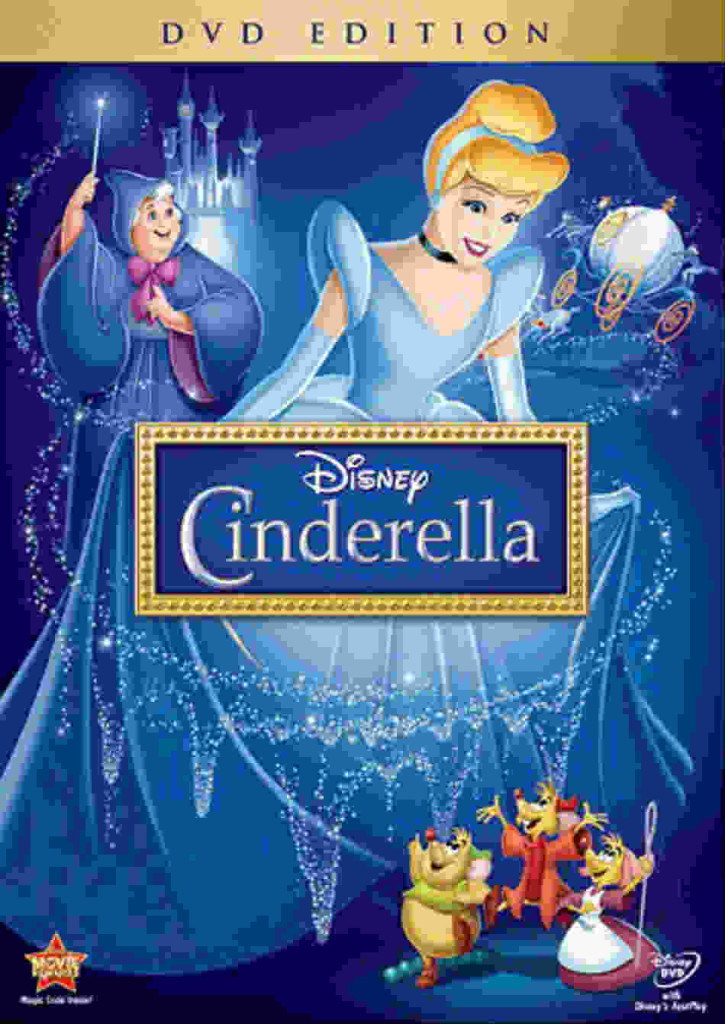
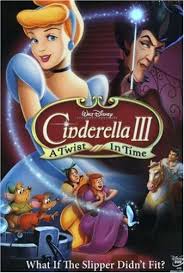
Comments are closed.